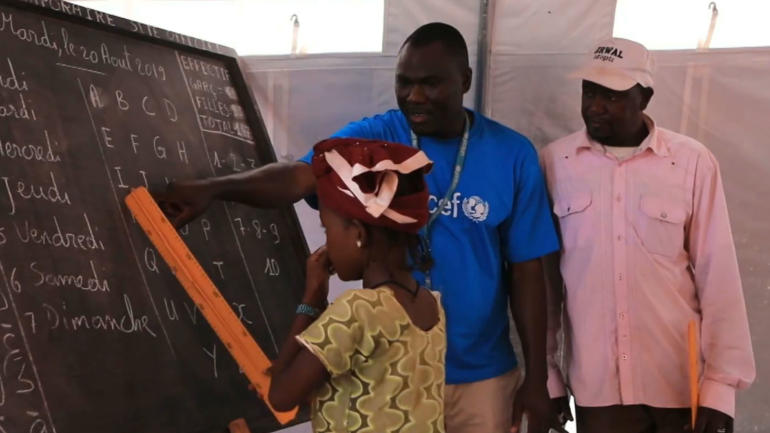Advocates are saying as more organizations look to new technologies to deliver aid there is potential to completely transform the humanitarian space for good.
CGTN’s Jillian Wolf reports.
The journey to school for Gothier Semi has been a long one. Forced to flee his home due to civil war in the Central African Republic, he lost five years of his education. And now, he’s working hard to catch up.
UNICEF hopes that its partnership with the GIGA Initiative will help students like him as it aims to connect every school in the world to the internet.
“Having connectivity allows us to provide content to children who otherwise may not have access to it,” Sunita Grote, UNICEF Innovation Fund Manager said.
The initiative is one of the first programs to benefit from UNICEF’s new cryptocurrency fund which the agency hopes will be the most efficient and effective donation method yet.
“We saw cryptocurrencies moving from our donors to UNICEF out to these three companies in a matter of minutes. This is usually something that would take us several days at least to do. So you can similarly imagine that being able to move cash down to somebody that’s in a refugee setting far more efficiently would have a significant impact on them getting access to what they need,” Grote said.
It’s the first U.N.-agency to implement cryptocurrency into its funding structure and serves as an answer to one of the biggest calls to action the U.N. has faced:
“We are seeing that we’re increasingly being asked to be more transparent about how we’re allocating resources and hopefully this exploration of blockchain will help the U.N. leverage the benefits that new technology has to offer,” Sunita said.
Those benefits are being seen in Jordan’s Zaatari camp with the U.N. World Food Program Building Blocks pilot using blockchain technology. Syrian refugees cash out using eye scanners, showing donors that their funds are actually reaching those on the front lines.
UNICEF estimates that around 263 million children and adolescents lack access to proper learning as a result of conflict, geographic location, and economic issues, to name a few. The agency hopes that with this greater level of transparency, more donations will flow in and other U.N. agencies will follow suit.
Investing in innovative technology, philanthropic consultant, Paul Lamb says, it could transform the humanitarian field for good.
“The technology is really powerful and interesting, but it’s really about impact. And I think through some of these examples we’re starting to see significant impact, and I think over the long-term that impact is going to grow,” Lamb said.
A greater impact reaching children far and wide. Jillian Wolf, CGTN, New York.
 CGTN America
CGTN America
